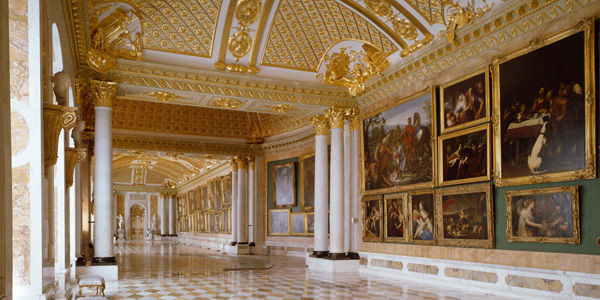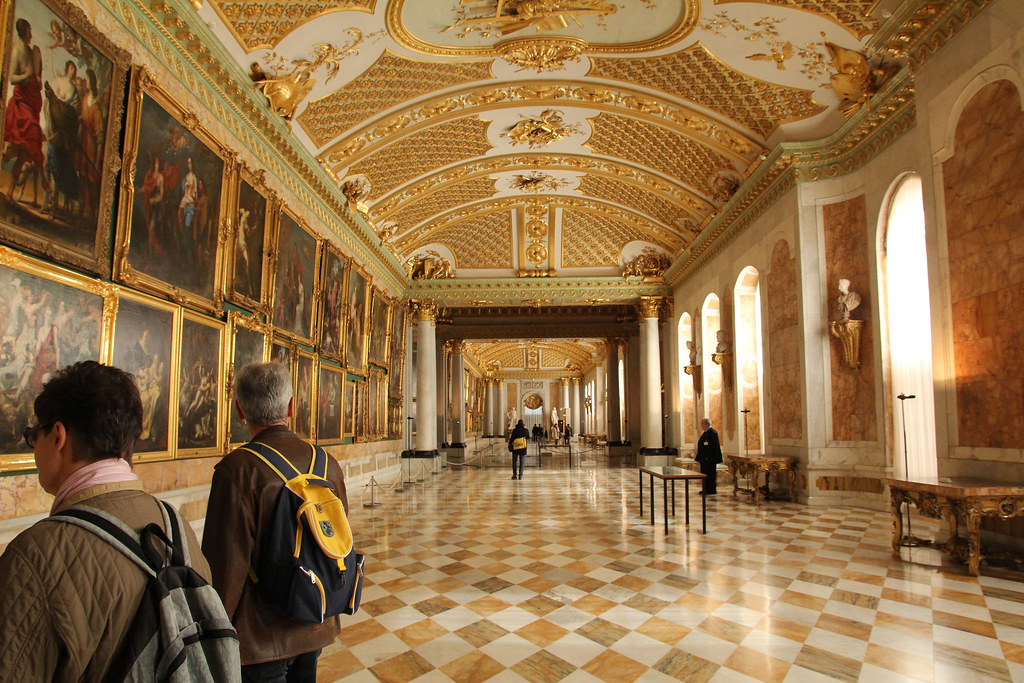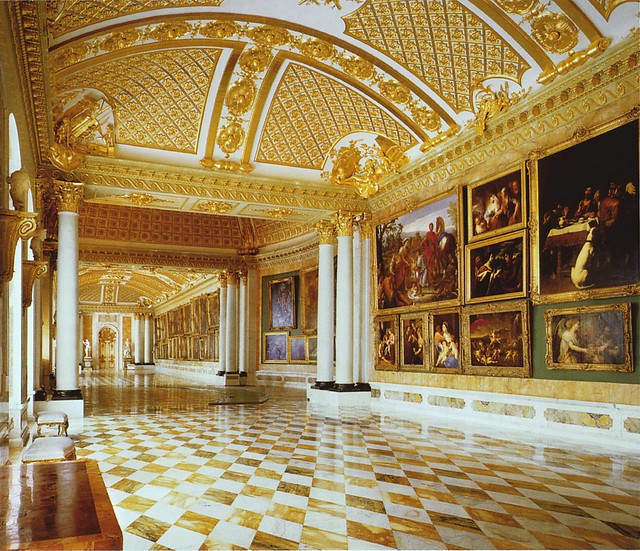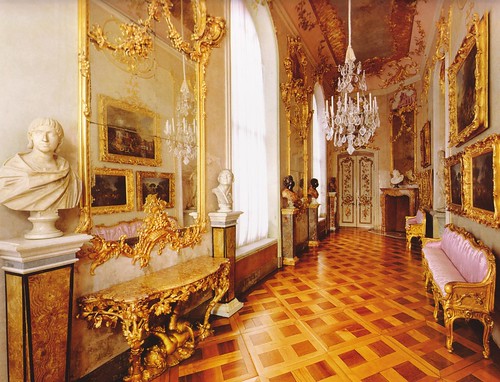Sanssouci Picture Gallery
The photo gallery in the park of Sanssouci Palace in Potsdam, built by Frederick II ( the Great) in the years 1755-1764. Already in 1761, as could not be thought of the establishment, Marquis d' Argens Frederick wrote to the camp, is the Picture Gallery " to St. Peter's in Rome the most beautiful thing on earth." The architect was Johann Gottfried Büring. It is located east of the castle and is the oldest surviving royal museum in Germany. It forms the counterpart to the New Chambers on the west side of the Sanssouci Palace.
History
Frederick the Great was a passionate collector of paintings. In recent years, he preferred the contemporary French Rococo art. Pictures of his favorite painter Antoine Watteau decorated the rooms of his castle Sanssouci.
After the accession to the throne in 1740, the king put increasing emphasis on pictures of the history painting, which in the hierarchy of genres were at this time at the top. There were works of the High Renaissance, Mannerist and Baroque periods, mainly Italian and Flemish artists.
As 1829 opened the Altes Museum in Berlin, about fifty images were there given, including the Leda of Correggio, three paintings by Rembrandt, some of Rubens, Anthony van Dyck, Watteau and all marble sculptures.
1929/30, the gallery has been re- decorated and it came from the 159 recorded in the catalog back 120 pictures from Frederick acquisitions from Berlin.
During World War II, 1942, the paintings were brought to Castle Rheinberg, where only ten 1946 came to Potsdam. Many pictures were lost. Only in 1958, a large proportion of the confiscated by the Soviet Union paintings back to Germany. A number remained to this day in Russian collections.
The exterior design of the building
Before that stood on the site of the picture gallery, a greenhouse, where Frederick the Great draw tropical fruits. Büring set a long -drawn, one-story building with yellow paint in its place. The middle part is emphasized by a dome. The garden are 18 marble sculptures between reaching down to the bottom windows. Most have been worked by the sculptors Johann Gottlieb Heymüller and Johann Peter Benkert. The sculptures are allegorical figures of the arts and sciences. The keystone heads above the long windows show portraits of artists.
The gallery inside
The magnificent design of the gallery hall impresses with the richly gilded ornamentation on the slightly domed ceiling. Painted to match the floor with diamond pattern of white and yellow marble of Italian origin. On the green-painted walls in the Baroque style tight hang next to and above each other the precious paintings in gilded frames. Among many other works, the " Doubting Thomas" of the Italian Caravaggio, Anton Van Dyck's " Pentecost" and from the workshop of Peter Paul Rubens " The Four Evangelists " and " St. Jerome ". At the elongated gallery hall, the cabinet endorses, which is similar richly endowed. In this space, the small-format works can be seen.
Peter Paul Rubens - The Four Evangelists
Caravaggio - The Incredulity of Saint Thomas
Exhibition
- 2013: The Fairest of the world. A re-encounter with the gallery of Frederick the Great, Sanssouci Palace, Potsdam. Catalog.










